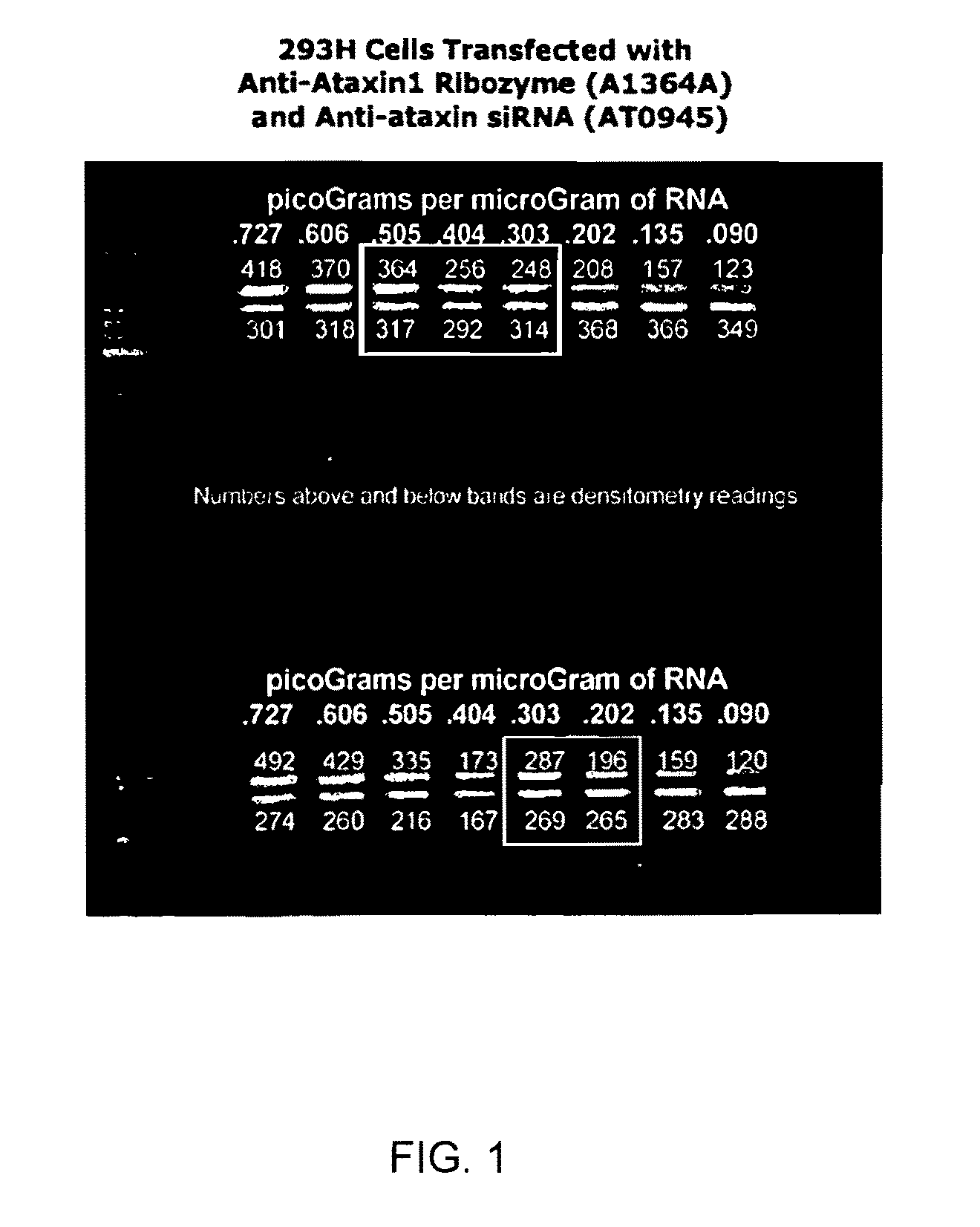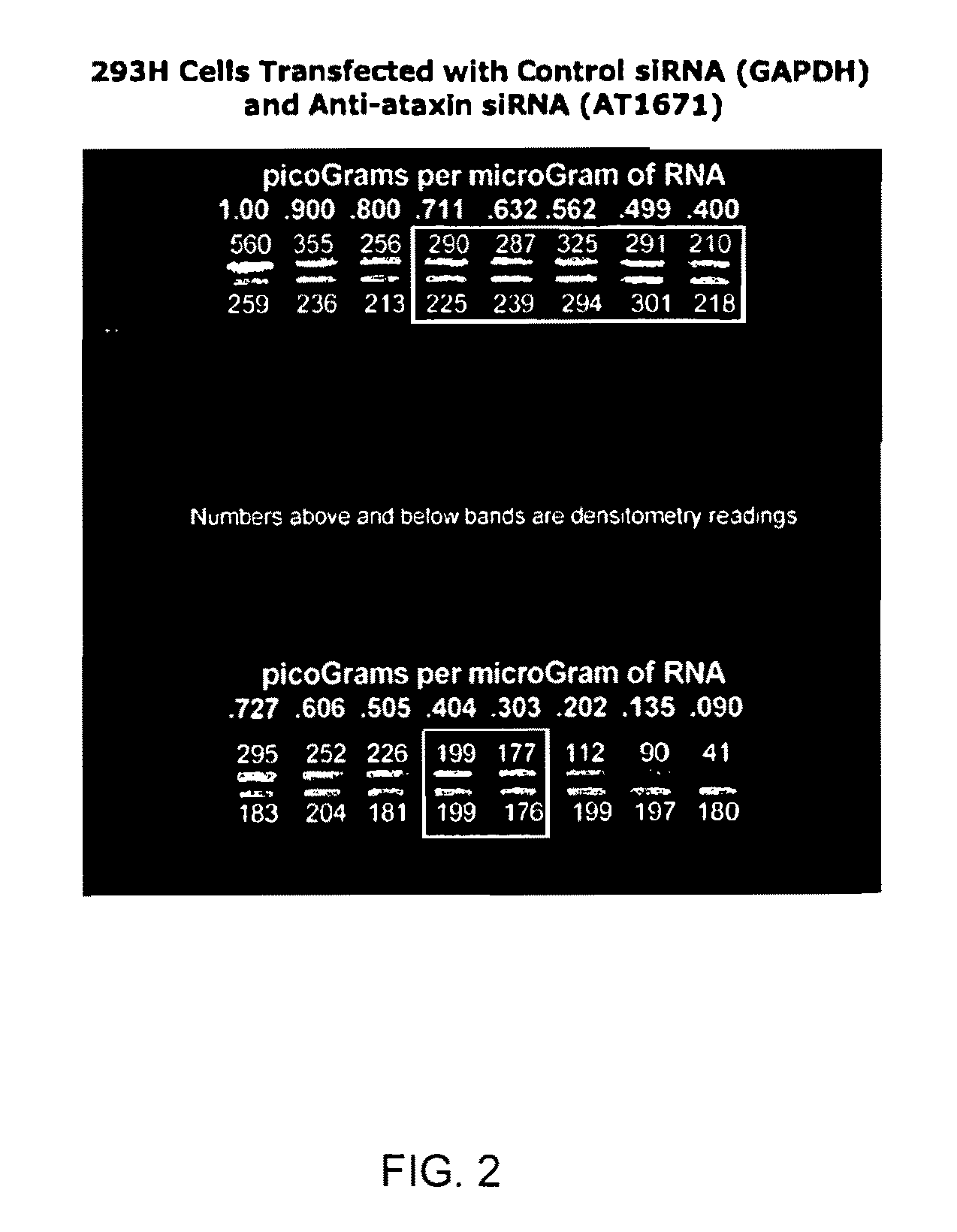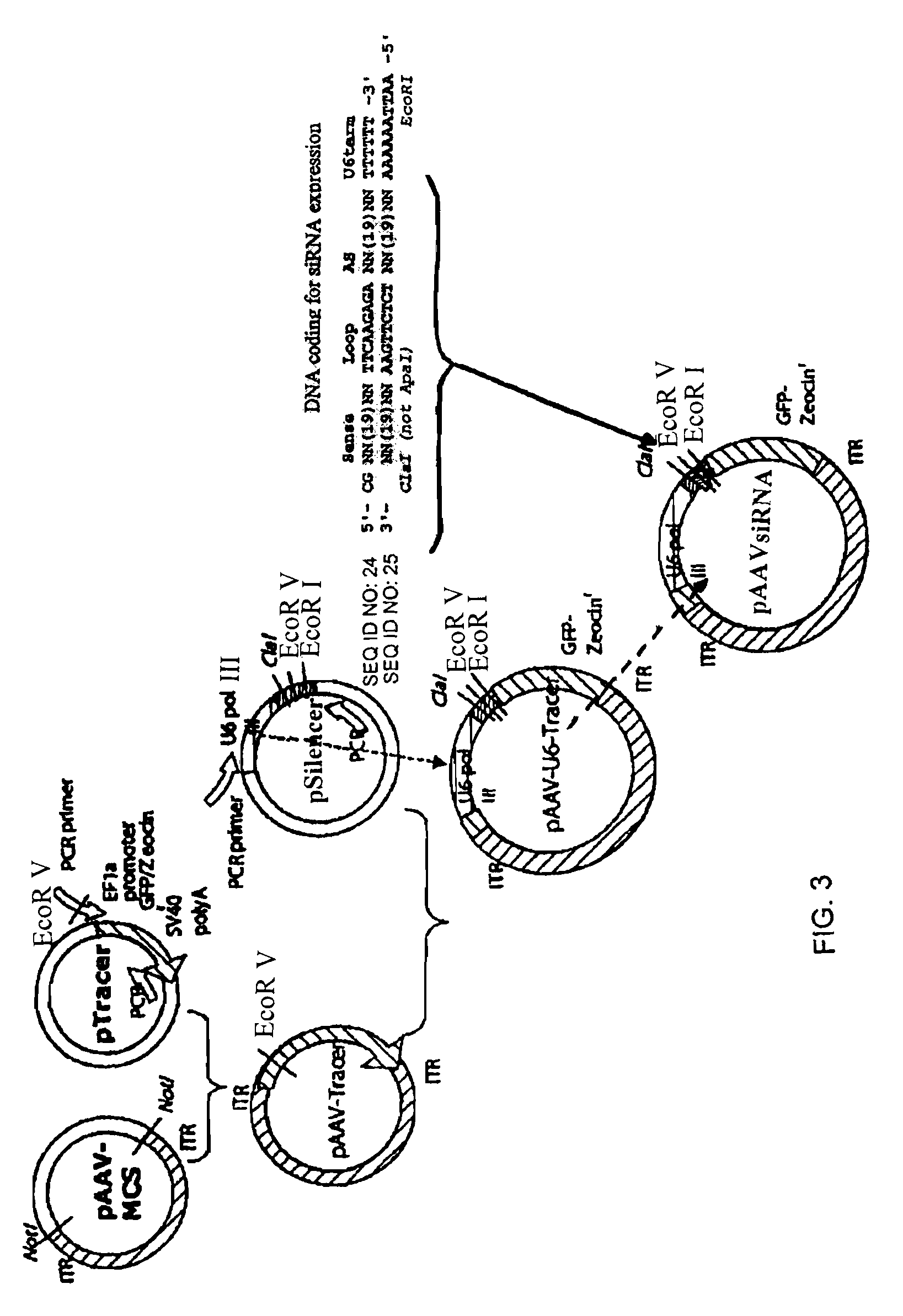Treatment of neurodegenerative disease through intracranial delivery of siRNA
a neurodegenerative disease and intracranial delivery technology, applied in the direction of genetic material ingredients, organic chemistry, drug compositions, etc., can solve the problems of inability to cure these neurodegenerative diseases, progressively debilitating diseases, and most of them end up fatal
- Summary
- Abstract
- Description
- Claims
- Application Information
AI Technical Summary
Benefits of technology
Problems solved by technology
Method used
Image
Examples
example 1
Construction of a Small Interfering RNA Targeting Human Ataxin1 mRNA
[0109]As an example of the embodiments of the invention, we have made a small interfering RNA that targets the mRNA for human ataxin1. This small interfering RNA reduces the amount of mRNA for human ataxin1 in human cells, in cell cultures. As a therapy for Spinocerebellar Ataxia Type 1 (SCA1), this same small interfering RNA or a similar small interfering RNA will be delivered to the cells of the cerebellum in the patient's brain, using implanted access ports and catheters. The result will be a reduction in the amount of ataxin1 protein in these cells, thereby slowing or arresting the progression of the patient's SCA1 disease.
[0110]The small interfering RNA against human ataxin1 was been constructed from the nucleotide sequence for human ataxin1. The sequence from human ataxin 1 was retrieved from the publicly-accessible nucleotide database provided by NCBI, retrievable as NCBI accession number NM—000332 (SEQ ID:15...
example 2
Delivery of a Small Interfering RNA Targeting Human Ataxin1 MRNA
[0118]The constructed siRNA molecules 1-3 described in Example 1 were transfected into HEK293 cells. The RNA produced by the transfected cells was harvested and assayed to measure the amount of human ataxin1 mRNA.
[0119]FIG. 1 shows the results of a quantitative reverse-transcriptase polymerase chain reaction (qRT-PCR) assay for the amount of ataxin1 messenger RNA (mRNA) per microgram of total RNA from cultures of HEK 293H cells. Four cell populations were assayed. The first were 293H cells that had been transiently transfected with siRNA against GAPDH, a “housekeeping gene” with no known relationship to ataxin1 mRNA expression. (The siRNA against GAPDH was supplied as a standard control by Ambion, Inc., in their commercially-available kit for making and testing siRNA). The second were 293H cells that had been transiently transfected with siRNA against ataxin1 mRNA at location 1671 in the ataxin1 mRNA sequence. The third...
example 3
Allele-Specific Reduction of Ataxin1 Expression Using Small, Interfering RNA
[0127]In heterozygous patients, if a single nucleotide polymorphism (SNP) were to differ between the mutant and normal length allele, an appropriate siRNA might selectively reduce expression of only the mutant allele. We have tested 293, DAOY, SK-N-SH, and HeLa cells using allele-specific RT-PCR for a SNP at position +927 downstream from the SCA1 start codon (see Accession NT—007592). HeLa cells express a 927C but no 927T allele, while 293 cells express a 927T but no 927C allele. DAOY and SK-N-SH cells express both allelic variants. We have created allele-specific siRNA centered at this site. Results of assays for allele-specific suppression of endogenous SCA1 mRNA by these siRNA variants will be presented.
PUM
| Property | Measurement | Unit |
|---|---|---|
| volume | aaaaa | aaaaa |
| green fluorescent | aaaaa | aaaaa |
| durations of time | aaaaa | aaaaa |
Abstract
Description
Claims
Application Information
 Login to View More
Login to View More - R&D
- Intellectual Property
- Life Sciences
- Materials
- Tech Scout
- Unparalleled Data Quality
- Higher Quality Content
- 60% Fewer Hallucinations
Browse by: Latest US Patents, China's latest patents, Technical Efficacy Thesaurus, Application Domain, Technology Topic, Popular Technical Reports.
© 2025 PatSnap. All rights reserved.Legal|Privacy policy|Modern Slavery Act Transparency Statement|Sitemap|About US| Contact US: help@patsnap.com



